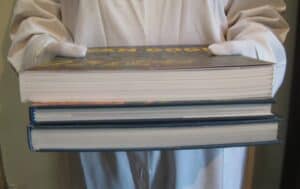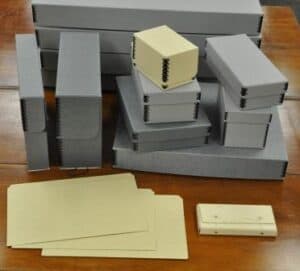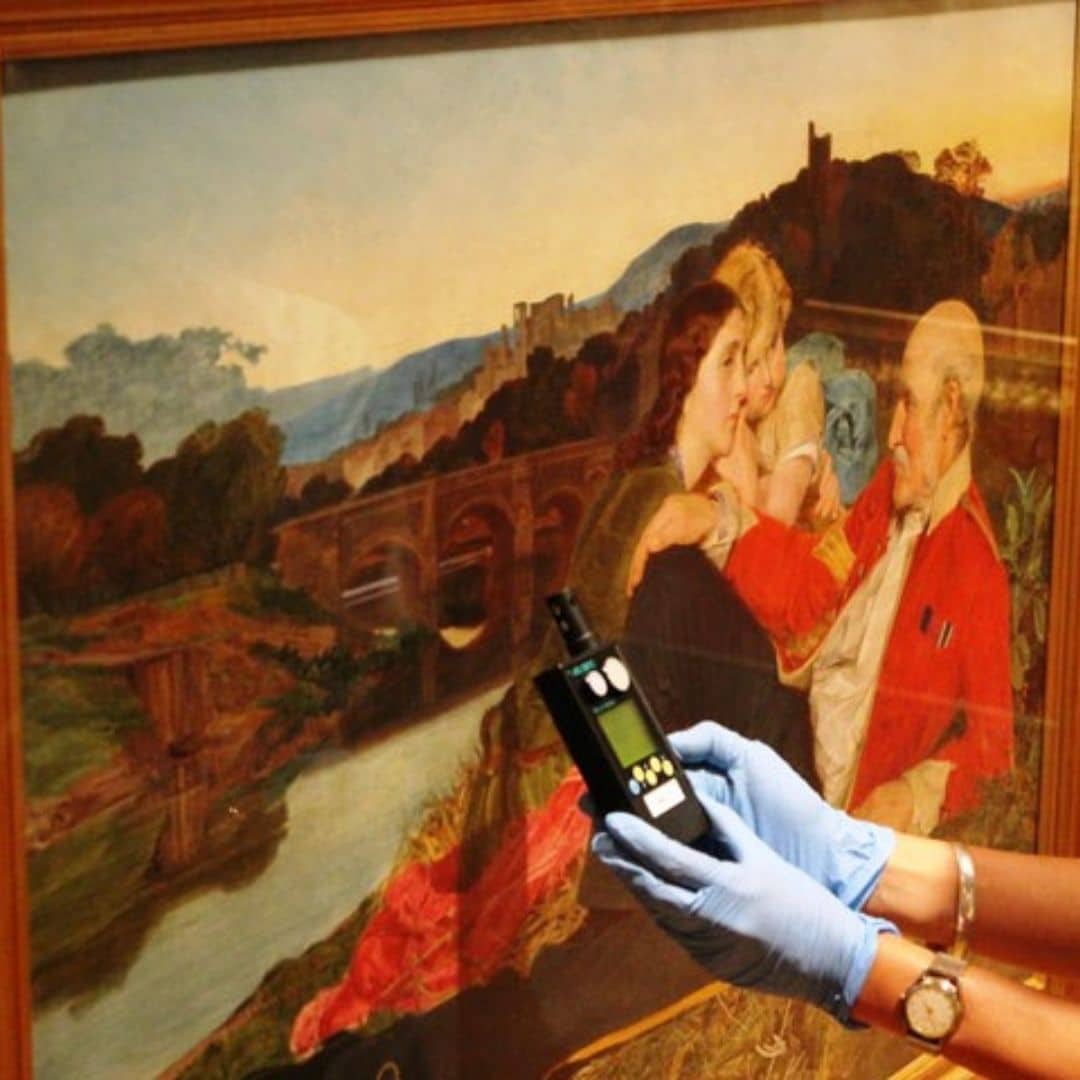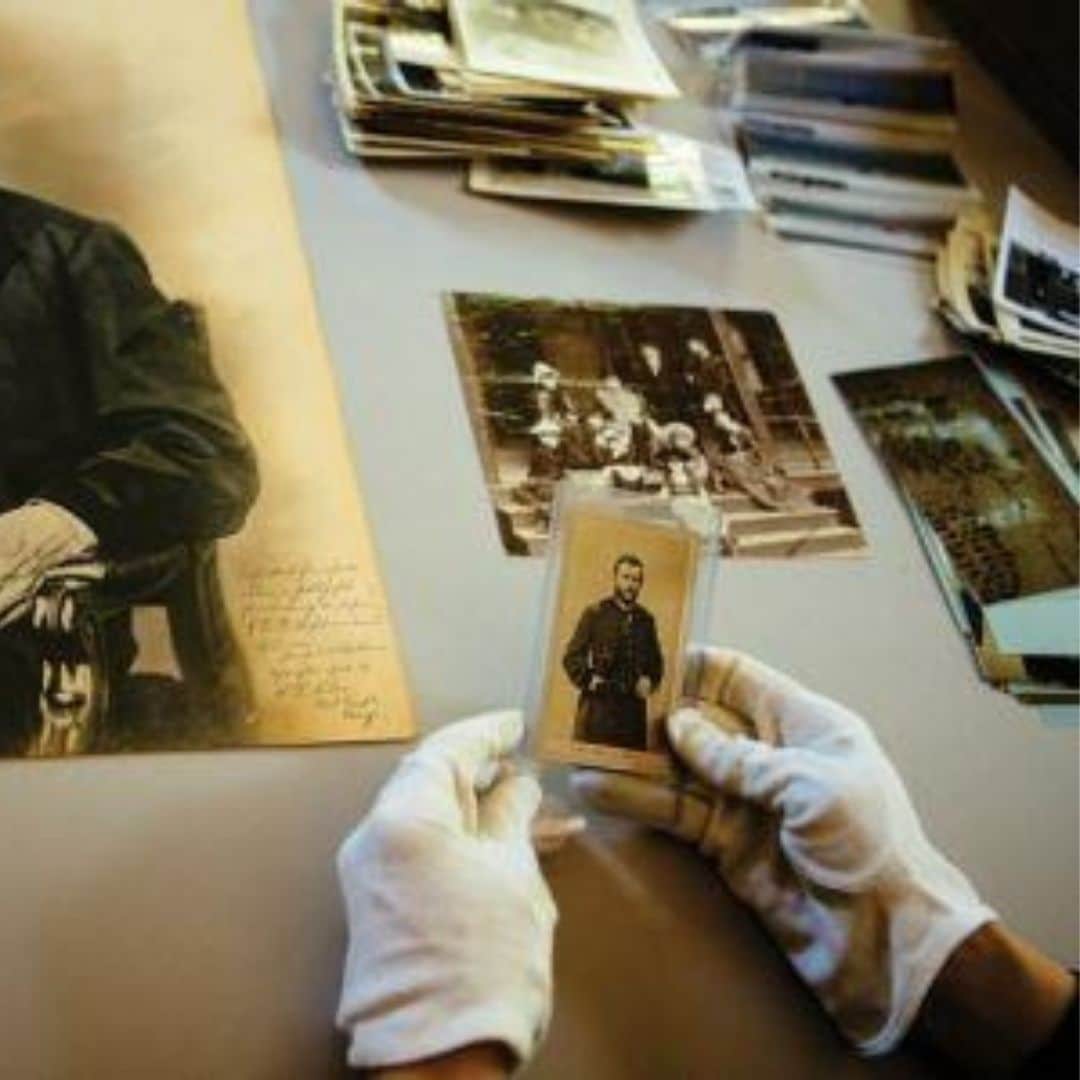Preventive conservation of books and documents interventions aim to create conditions that help to prevent damage or loss and contribute to slowing down the aging of materials.
5 actions of preventive conservation of books and documents interventions are:
- Handling and transportation
- Storage
- Maintenance and cleaning
- Integrated pest management
- Environmental management
Although preventive conservation interventions usually do not produce visible results, these preventive actions are absolutely essential to keep the collections in good condition, avoiding damage, losses and unnecessary expenses with deeper and more intrusive interventions.
What does preventive conservation of books and documents involve?
Although it is very difficult to completely eliminate the agents that intervene or trigger deterioration processes in books and documents, it is possible to stop or slow down their action by following a set of good conservation practices.
1 – Handling and transportation
Handling covers all actions that involve touching a book or document.

In many public libraries and archives, where there is a large circulation of books and documents, the best way to preserve them is to prevent damage from occurring. To this end, it is very important to raise awareness among all those who come into contact with books and documents, so that they take some basic precautions that will have a great impact on the conservation of these assets. Establishing rules for consultation and handling, placed in visible places, is an important step to keep the reader informed and for him to take an active role in the preservation of the volumes he uses.
2. Storage
The storage of books and documents can involve three distinct but complementary levels: the enclosure, the bookshelf, and the space (reading room, storage room…).

3. Maintenance and cleaning
Regular cleaning should be promoted not only of books and documents but also of storage spaces.

Ideally, there should be quarterly surveys to check the condition of books and documents, especially those that are less frequently consulted.
When it comes to cleaning spaces, if humidity levels are generally too high, dry methods should be preferred: use a vacuum cleaner, microfiber cloths, etc. In very dry spaces, cleaning can be done with a firmly squeezed mop, using mild detergents (no bleach, ammonia, or other toxic or irritating substances); using the right method in these situations can help maintain a more appropriate relative humidity in the spaces.
For the conservation of books and documents it is also essential to promote air circulation in storage spaces, in order to prevent the appearance of fungi.
4. Integrated pest management
Pests of insects, rodents or other animals can occur, as well as fungi and bacteria can develop in storage spaces, where they can cause a high degree of degradation to books and documents.
Integrated pest management, an increasingly common practice in libraries, archives, and museums, is based on four fundamental procedures:
- monitoring,
- identification,
- prevention,
- control.
To properly detect any infestation scenario, it is necessary to know what the organisms feed on, where they hide, and what environment is conducive to their presence and proliferation.
5. Environmental management
Temperature and relative humidity
As a way to guarantee the preservation of collections in the long term, it is fundamental to know the thermo-hygrometric behavior of the spaces where they are stored. For this, there are several types of monitoring devices that can be used.
Light and invisible radiations
Since paper and most of the constituent materials of books and documents are sensitive to light, 50 lux is generally recommended as the ideal (light) level, reducing ultraviolet (UV) radiation levels below 35 microwatts per lumen (μw/lumen).
Pollutants and contaminants
The monitoring of pollutants inside buildings is justified especially in areas exposed to significant sources of pollution.
useful links: Canadian Conservation Institute ICOM


